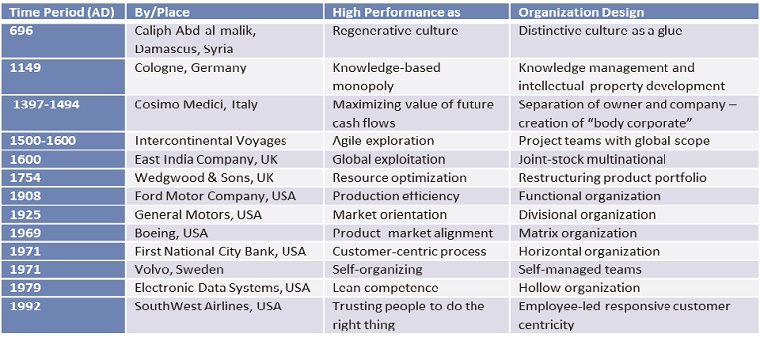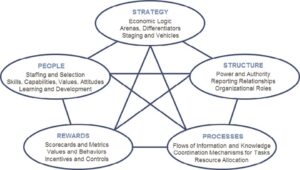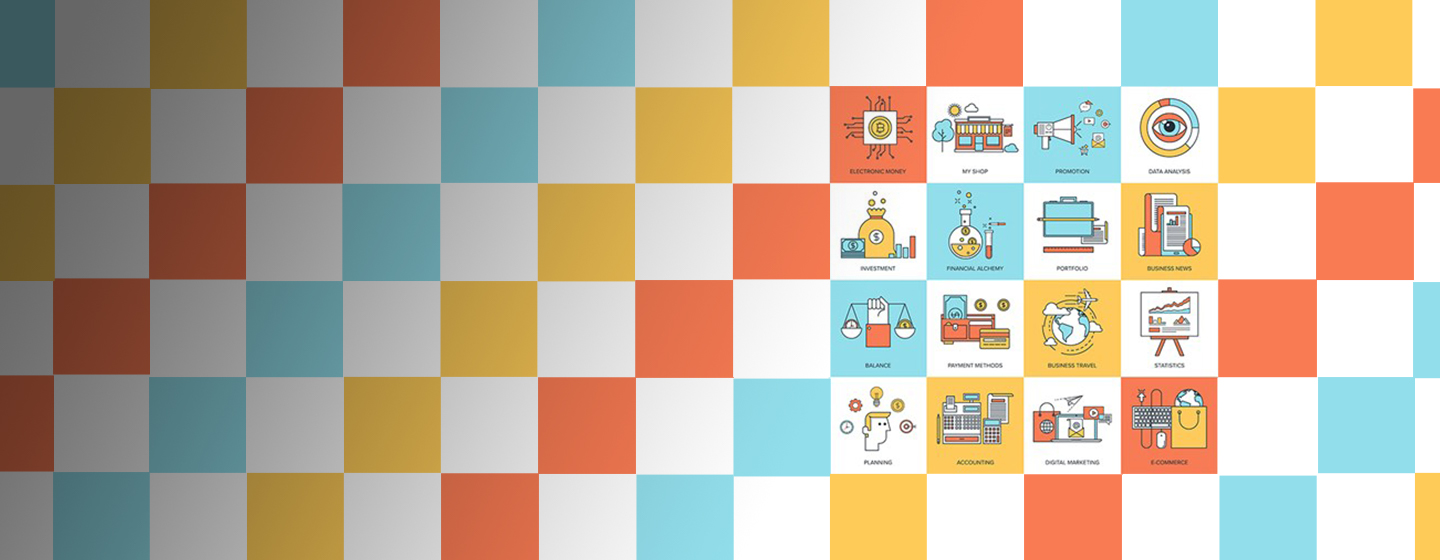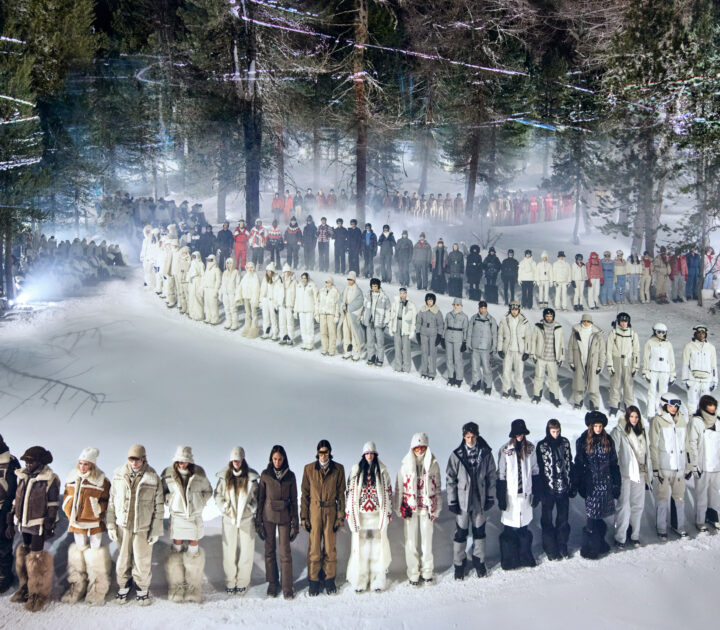Over 100 executives attended an IMD Discovery Event to explore how organization design can support a high performance organization. Participants were taken on a journey through the evolution of organization design from its inception centuries ago until the beginning of the current millennium. Case studies on Deloitte and P&G served to highlight the design changes undertaken by those organizations and an interactive discussion provided participants with key insights on how to successfully implement organization redesign.
The design of an organization serves to align the organization’s capabilities with the demands made by its environment. The rate and pace of change, restructuring, globalization, and the move from a product- to a service-driven business model often involve redefining the logic of the organization design in a way that is compelling for employees. In the past, an organization structure – once mapped – could remain intact for decades. Nowadays, it is essential to continuously restructure to protect the core business and adapt to new opportunities. This is because employees increasingly have to deal with the complexities that come from oscillating between centralization and decentralization, exerting influence without authority, operating with virtual teams and so on. To cope and thrive in such dynamic environments, an organization needs to apply distinctive design criteria. Professor Denison pointed out that while no organization seeks complex solutions, companies do first have to understand the complexity before they try to reduce it by making the key design choices clear. In general, organization design can be categorized in three ways:
- Anchored on an internal control system (like a skeleton). Traditionally, this has been the most common mechanism, where the number of hierarchical levels, geographic regions, products, industry verticals and functions are well defined and fixed. The organization chart highlights how people are controlled through reporting relationships. However, it does not reveal how value is created in the organization.
- As a process flow (like a river) that creates value. The process-based organization is led by the process paradigm, which focuses on the horizontal view of business activities and aligns organizational systems with business processes. Emphasis has been increasingly placed on process- based organization designs to eliminate the inefficiencies of traditional functional and divisional structures.
- As a network of external relations (like an exoskeleton). In this case the design is not within the organization but outside – in distribution systems, supply chains, user groups, market segments or social networks. Thus, the external organization structure encloses dynamic and interconnected internal systems that respond to the changes outside the organization.
To succeed, these three design perspectives must be supported by an organization culture that acts as the glue that holds everything together. “You cannot make an organizational change without a complementary change in culture. The mindset, underlying principles, values, assumptions and behavior all influence the way in which the organization structure evolves over time,” Professor Denison stressed.
Evolution of organization design
Professor Narasimhan asked what high performance means to different organizations. Participants offered a variety of responses, including overachieving objectives, delighting customers sustainably over time, consistent value creation, agility in responsiveness and empowering employees to consistently challenge themselves. While agreeing that these functionalities are currently being expected from the design, form or structure of the organization, he pointed out, “Diverse demands made on today’s organizations are not replacing one another, rather they are building upon one another. And design is often perceived as the only option for managing conflicting priorities – flexibility vs. consistency or internal alignment vs. responsiveness.”
Professor Narasimhan went on to provide an in-depth overview of the evolution of organization design over the centuries, starting in 3000 bc, when the first written evidence of organization design was recorded during the era of King Den of Egypt who ruled via command and control and motivated subjects through punishment. The next evolution was seen in 2500 bc in the first city known to humans – Ur in Mesopotamia (Iraq) – when there was predictable and reliable generation of surplus. The Standard of Ur placed the king at the top of the social structure, followed by different classes of people in descending hierarchical order, thus formalizing the system of division of labor. In 550 bc in Anshan, Iran, Cyrus the Great built the largest empire that the world had yet seen. Cyrus administered the vast kingdom through Satraps (governors) who were selected and instituted based on their competencies. The design was fundamentally about delegating authority and this went on to serve as a blueprint of the future Greek and Roman empires.
In the first century ad, Caesar Augustus (the successor of Julius Caesar) marked the beginning of acquisition and assimilation as he embarked on an ambitious growth strategy that involved acquiring more and more territory, which was ruled through standardization. Then, in China in 618 ad under the Tang dynasty, a formal state machinery was established with the creation of offices and the appointment of highly qualified Mandarins to nine different ranks. This design brought structural stability and the formation of a high performance bureaucracy. Professor Narasimhan stated, “Mandarins had to be qualifi through merit based examinations to occupy a role. Compare this with the situation today when the grand-nephew of a founder takes up a key position – we are not following the structures that were established way back in 618 ad!” He went on to illustrate subsequent organization design evolutions up to the turn of the current millennium (refer toTable1).

In the 2000s, a high performance organization was defi as one that maximized shareholder returns, and the boundary-less organization became the most prominent design – fi propagated on a global scale by General Electric. This was followed by the formulation of virtual global teams, especially by IT outsourcers such as Infosys, Tata Consultancy Services and the like, which provided seamless global delivery with a “follow-the-sun” model. This was also the period that witnessed the explosion of online social communities, which in turn fueled the exponential growth in e-commerce. Companies such as Amazon, eBay and Alibaba established web-enabled collaborative structures to achieve knowledge-enabled customer centricity.
Case studies
Professor Piskorski led a case study discussion of Procter & Gamble’s organization design challenges over the last 65 years. He started by asking everyone to put themselves in the shoes of A.G. Lafl in 2001, when he was appointed CEO of P&G, and had to choose eitheran incredibly innovative organizational structure that empowered managers in the lower echelons of the hierarchy to make strategic trade-offs (but did not work) orrevert to a more traditional structure. Participants were able to make a call on this important strategic choice after discussing the history of P&G’s organizational design and examining the trade-offs inherent in each organization design.
The discussion underscored three critical insights. First, organizational design has to follow strategy. Firms with relatively straightforward strategies can opt for organizational designs based on product, geography or function. But, as soon as more complex strategies are implemented, intricate organizational designs that feature matrices or even cubes, with plenty of dotted lines, have to be introduced. But these more complex designs always generate additional problems, such as diffusion of responsibility or a slow decision-making process.
This leads to the second insight – there is no such thing as a perfect organizational design – and every design will always have some downsides. This is particularly important to remember when introducing a new formal design: It will solve some problems but it will always create others.
Case Study: Deloitte University
Jorrit Volkers, dean of Deloitte University, Europe, Middle East and Africa (DU EMEA), shared how the corporate university was established, as a component of the organization structure, to serve as a mechanism for building cross-border collaboration within the company.
Deloitte, the world’s largest professional services firm in 2014, comprises about 90 member firms employing over 200,000 people and is present in 150 countries. One of the most unique features of Deloitte’s structure is the primacy of individual member firms, which are separate and independent legal entities and not subsidiaries or branch offices of a global parent company. Instead, they are wholly-owned by the partners of the member firms and organized on a country or regional basis. Member firms pay a license fee to share the “Deloitte” brand. This allows them to practice with standard methodologies, client service models and professional guidelines. Managed locally by their respective managing partners, member firms are headed by an elected CEO, who is a representative of the partners. Such a structure serves to ensure that Deloitte professionals are close to the business on the ground and have significant strength in serving clients at the specific country level. However, a key challenge remained – Deloitte managers, senior managers, directors and partners work within four functions (tax, audit, financial advisory and consultancy) in a matrix structure spanning seven industries but they all operate at different levels across various countries and regions.
In 2011, CEOs of 12 European countries came together to decide how to build a superior culture for cross-border collaboration among member firms in different countries. Such a culture was essential to not only better serve multinationals but also address cross-border needs of local clients in an increasingly interconnected world. One of the options was to establish Deloitte University Europe and it was Volkers’ responsibility to prepare a business case that would convince the CEOs to commit resources to this initiative. Despite the lack of adequate numbers to justify the ROI, Volkers succeeded in converting the CEOs into “believers” because the corporate university was seen as: (i) a credible investment in people, (ii) a platform to foster inclusiveness by bringing diverse people together, (iii) a signal to clients of Deloitte’s commitment to quality and education, and (iv) a means to grow the business through new collaborative networks.
The CEOs committed to a centrally managed Deloitte University Europe budget, which was fixed as a percentage of their annual revenue. Volkers principally focused on developing a curriculum with programs geared toward leadership development, addressing current business needs and generating future business. The Deloitte University Europe soon evolved into DU EMEA as the number of countries that came forward to participate under the corporate university increased from 12 to 25. By the end 2014, the Brussels DU EMEA facility had been operating for over a year and its success was validated by the steadily rising number of training weeks, attendance rates and financial commitments to learning.
Finally, participants underscored the importance of informal structure in organizational design. Professor Piskorski highlighted, “The solution never lies in the formal architecture of the company. Informal architecture is equally, if not more, important. But you can’t leave the informal architecture to develop on its own. You have to plan for it. In fact, your best bet is to think what kind of informal architecture you want, and then design the formal architecture to spawn the desired informal architecture. With complex strategies that companies need to execute these days, such reliance on the interaction of informal and formal structure is the only way to go.”
Learnings
To round off the discussion, Professor Denison emphasized that organization design focuses on tension, conflict and disagreement between product, function and geography. And the importance of organization redesign is especially understood when there is a dramatic change in the business environment. However, most design efforts involve spending too much time drawing the organization chart and too little time redesigning processes and rewards. In this context, he shared Jay Galbraith’s STAR Model,TM which remains one of the most widely-used and accepted organizational design frameworks (refer to Figure 1). This model relies on five categories of design policies: strategy, structure, processes, rewards and people, which determine the direction of the organization, the location of decision-making power, the flow of information, the motivation to perform, and employee mind-set and skills.

For many organizations, the design has to evolve through three phases in order to support (i) the focus on product quality to reach a global standard, (ii) increased service needs along with changing business models and (iii) addressing market needs by creating project teams to bring business units closer to the markets. If these three stages do not kick in at the right time, the organization’s growth will tend to stall. Professor Denison summarized the key takeaways:
- Organization redesign has a greater probability of succeeding if it occurs before it is necessary. It is really difficult to achieve if the company is already in crisis mode.
- Each stage should build on the previous stage and lead to a gradual transformation, rather than making a leap from the past to the future.
- A few strong ideas are better than many. It is not feasible to emphasize everything.
- A company’s principle asset is its talent pool, and the key is to ensure that talents deliver on customer needs.
- Successful organization redesign involves both dreams and details. Vision is a dream with a deadline.



